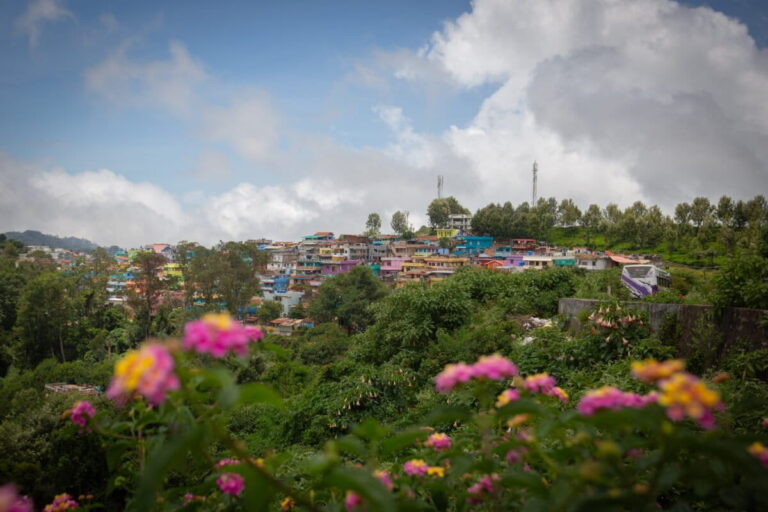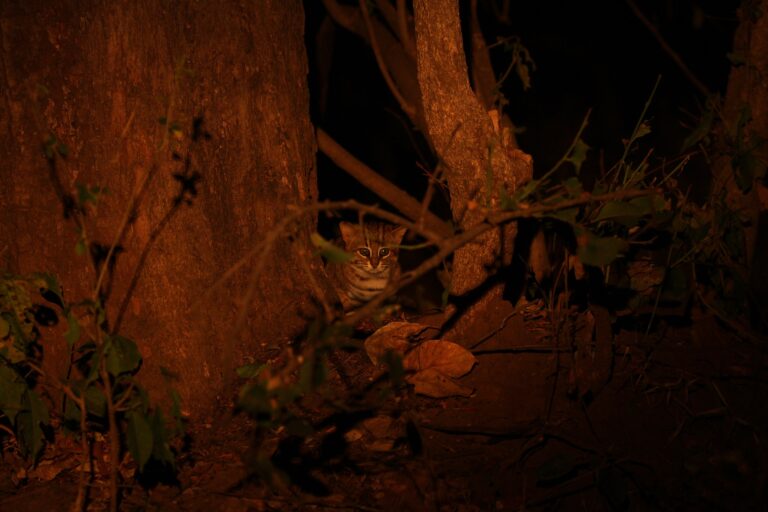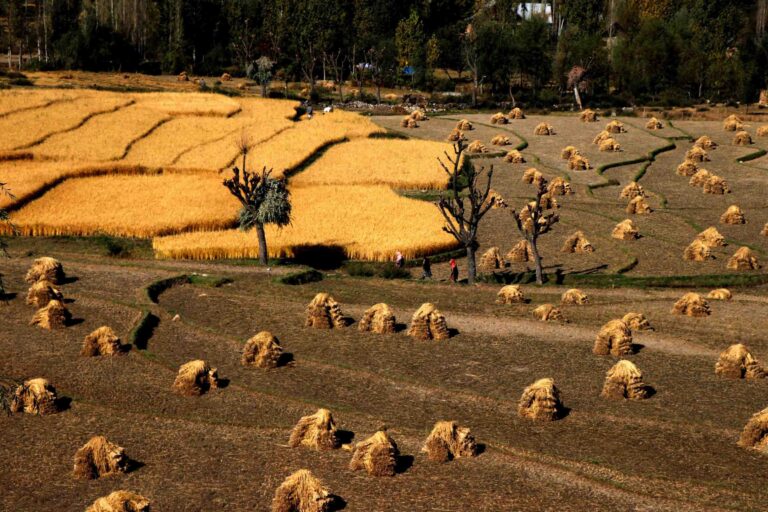- A tiger was last spotted in the Aravallis in Kumbhalgarh, about 50 years ago; there are now plans to re-introduce the apex predator in a region famous for its sheep, goat, and camel herders.
- The National Tiger Conservation Authority report says, a majority of the 575 local people surveyed, were positive about the introduction of the tiger; local herders however said they were unaware of the plan.
- Wildlife experts question the “fortress model” of conservation, which involves evacuating wild habitats of human populations. The plan to incentivise evacuation of settlements could backfire; pastoralists serve to contain forest fires and conserve biodiversity, warn wildlife experts.
On July 5, 2021, during the peak of the COVID-19 pandemic, BJP member and Rajsamand MP Diya Kumari wrote to the Centre, seeking that the Kumbhalgarh and Todgarh Raoli Sanctuaries in Rajasthan be upgraded to a tiger reserve. The government acted promptly, and a five-member expert committee was constituted to write a report by the National Tiger Conservation Authority (NTCA). Later in July, reports in the media indicated that tigers may be introduced into this ecosystem.
This report has come as a surprise to ecologists and nature lovers in the area, who have long led educational tours into the forest. Khem Singh Rathore, who takes nature lovers into the forest on horses to study foliage and wildlife says, “I have been leading these study tours for over 30 years.” He realises that if tigers are introduced to the sanctuary, those trips will end.
Rajasthan chief wildlife warden Arindam Tomar said, “The state government is still examining the report. The introduction of the tigers, even as the feasibility report states, would take a few years. We are still in very early stages.”
Karna Ram and his friends herd camels in this area. They take their animals grazing over vast tracts in this region. The camel, sheep, and goat-herding Raika community here is distinguished by the deep red turbans and white clothes they don, also the jewellery that even men wear. The herders are accustomed to protecting their animals from attacks by wild animals, including leopards, and accept the loss of livestock to predators with equanimity. With the introduction of the tiger, though, their nomadic pastoralism could become unsustainable.

The NTCA report mentions that over 1,60,000 residents of 18 villages in Pali, Udaipur and Rajsamand districts will have to make way for the tiger sanctuary; “incentivized voluntary relocation” is recommended. The report says feedback was received from 575 local residents, and that a “majority of the people are positive about declaring the area as a Tiger Reserve”.
People who have lived for long in the area, however, stated that they had no clue about these developments. It was unclear who was surveyed, and whether those who put their thumbprints to the letters that were provided to them actually understood what they were consenting to.
The NTCA report is not yet in the public domain, and could not be found on the organisation’s website. It was made available to this Mongabay-India correspondent through a trusted source. It contains a list of 12 “key observations” – including how the shape of the present sanctuary, located in a strip of the Aravalli range in the area locally known as Godwar, where the hills meet the Thar Desert, is not conducive to the introduction of tigers. At its broadest, the sanctuary is only 15 km wide, and its average width is only 6.5 km. In other observations, the report underlines the lack of “landscape connectivity” – of contiguous forests into which any adult tigers could disperse.
Professor Anil Kumar Chhangani, head of the Department of Environmental Science at Maharaja Ganga Singh University, Bikaner, says if the country can re-introduce the cheetah, there is no reason why the tiger cannot be re-introduced to Kumbhalgarh. He contests the claim in the NTCA report that the last tiger in the area was killed in 1961 – he says there are archival records of tigers being spotted in the area until 1969.
“There are pastoralists on the edges of other national parks and sanctuaries in India; when it comes to the area and the width of the reserve, those too are comparable with the core areas of other tiger reserves in the country. It is quite common for tigers to stray out of the boundaries of the reserve, and prey on livestock.”
“Research scholars whose work I have supervised have noted that there are several tigers beyond the boundaries of Rajasthan’s tiger reserves; it is wildlife outside the reserves for which we need policy measures. In India, we tend to copy notions of conservation from Western models, even when those models have not served very well in the West. We in India have a rich tradition of communities well adapted to the presence of wild animals. These are the communities vital to the health of the ecology – the orans or sacred groves protected by tradition in Rajasthan, for instance, remains relatively healthy and rich in biodiversity not because armed guards protect them, but because local beliefs are still strongly held, and tradition does not allow their destruction. What reports we read these days of mining in such areas, for instance, are often about destruction by forces outside the community; members of the local community rise in protest against the depredation of their sacred lands,” adds Chhangani.
Professor Paul Robbins, dean of the Nelson Institute for Environmental Studies at the University of Wisconsin-Madison in the US, who has in the past conducted extensive fieldwork in Rajasthan, noted that the Kumbhalgarh reserve is home to endangered wolf populations, “who could in no way share the territory with tigers. Moreover, the reserve is a slim 8 km wide in some sections, with large agro-pastoral populations in areas immediately adjacent to the forest. Leaving aside the critical resource issues of these communities, the human/wildlife conflicts these invite are going to be constant and serious. Finally, the reserve isn’t viable for tigers, and while it is a long connected contiguity, it would make a bad corridor, as it is isolated from adjacent tiger areas and perforated by national highways, railways, and other infrastructure.”
He pointed out that the historic tiger population in this area survived in a landscape with none of this infrastructure and with likely a good deal more forest cover. “This is, quite simply, a failure waiting to happen,” Professor Robbins wrote, in an email.
MK Ranjitsinh, retired IAS officer who was instrumental in drafting the 1972 Wildlife Protection Act, however, states that the introduction of the tiger is often one way to preserve wild habitats. He disagreed with the contention that there were no contiguous forests, pointing out that the Todgarh sanctuary and forests to the south could be accessed by dispersing tigers. He recalled that as district collector, he had overseen the rehabilitation of village residents in over 20 villages when the Kanha Tiger Reserve was established in Madhya Pradesh. He reiterates that there should be no forced eviction, but the main opposition to moving villagers comes from “jholawalas”—activists – he states. Often, people wish to move, he asserts.

In his 2002 book Fortress Conservation: The Preservation of the Mkomazi Game Reserve, Dan D Brockington documented the negative effects of excluding local populations in the bid to conserve nature in Africa, questioning the thesis that nature and people must be separated. This is a theme that Ilse Kohler Rollefson, co-founder of India’s first camel dairy in Pali district of Rajasthan, dwells on in her book Herding (forthcoming).
In 2012, several village residents in the Kumbhalgarh region submitted applications to the state government seeking recognition of their forest rights under the Forest Rights Act, 2006. Those requests have not been granted.
Lawyer Rituraj Singh Rathore who successfully argued a case in the Rajasthan High Court against the construction of large and luxurious tourism lodges within a one-km radius of the Kumbhalgarh Wildlife Sanctuary argues that moving people out of forest areas might be a good thing, after all, given that the government does not build schools or hospitals in forest lands. “They could enjoy better government provisioning if they move – and the term to use is not eviction, because such movement has to be incentivised and voluntary, not forced,” he says.
Meanwhile, the move to introduce the tiger to this ecosystem is gaining momentum. A 211-hectare herbivore enrichment centre run by the state forest department to augment the prey base in the sanctuary has begun to release chinkara and nilgai into the forest, in preparation for moving tigers, according to reports in local newspapers. A visit to this centre in February 2022 showed that about 20 chinkara and nilgai were being raised for release.
The NTCA committee report notes the huge dearth of staff – 57% of allotted posts in the forest department were vacant; the network of national and state highways, and a railway track in the area of the proposed tiger reserve could cause wildlife mortality.
Despite all these adverse observations, the committee recommends steps needed to be taken to make the area a viable home for tigers. The state government could “create an inviolate core of at least 800-1,000 square km by involving areas from both Kumbhalgarh and Todgarh Raoli Wildlife Sanctuary,” the committee suggests. Prey augmentation and habitat restoration is recommended. Land-use conversion in the area should be suspended, until the tiger reserve is legally consolidated, and village residents in critical areas relocated.
The team conducted its survey over only two days in September 2021, and records that there is sufficient water in the area. This observation came soon after the monsoon – a survey in the summer months ahead of the monsoon might have given the committee a different impression of water availability. The nomadic pastoralists of the area are specially adapted to the conditions, and move to places where pastures can be found, when water is scarce.
The committee also proceeds with the assumption that tribal hamlets can be easily relocated: “Presently the villages inside the proposed tiger reserve boundary as well as in the areas identified in the landscape development plan, are thinly populated. Most of them are tribal settlements, and at present they are deprived of basic necessary facilities such as healthcare.”
The committee, significantly, acknowledges that the local community has done a fair job of conserving the ecology: “Forests of Kumbhalgarh and Todgarh Raoli are the last remaining tropical forest on the Aravallis…”
GV Reddy, who retired as the Chief Wildlife Warden of Rajasthan about a year ago says that this region is known for the striped hyena and the wolf, which too are endangered – instead of more tiger sanctuaries, what the state needs are sanctuaries that cater to the less well known species that face threats from rampant stone mining and alterations in their habitats.
Rajasthan is renowned internationally for tiger tourism; the lure of tourist revenue gives the impetus to this decision to introduce tigers in Kumbhalgarh; however, there are strong vested interests in more established tiger reserves like Ranthambore which would not like to see tourists being able to choose different sites to view tigers. One person who works closely with government officials and did not wish to be named indicated that the resistance to the introduction of the tiger in Kumbhalgarh comes also from those vested in tiger tourism at Ranthambore.
The state government too seems to be disinclined to move tigers to the area. Rajasthan had attempted to relocate tigers to the Mukundra Hills Reserve in Kota, and that experience was not encouraging, given the tiger deaths. The failure was striking, given that tigers dispersing from Ranthambore and Sariska reserves have moved into this area in the past.

A table in the NTCA report listing the number of forest fires between 2016 and 2021 shows a huge upward trend – from five fires in 2016-17 to 32 in 2020-21. In other parts of the world, pastoralists are seen as a line of defence against forest fires – their animals clear foliage and remove the dry mass that could go up in flames; the animal manure increases soil fertility, and the animals help in dispersal of seeds too. With the introduction of the tiger, however, the changes in the ecosystem will make continued grazing fraught with risk.
Read more: How a livestock grazing ban in Sikkim has transformed pastoral communities
Banner image: The National Tiger Conservation Authority report says, a majority of the 575 local people surveyed, were positive about the introduction of the tiger. Photo by Ayush Baheti/ Wikimedia Commons.













